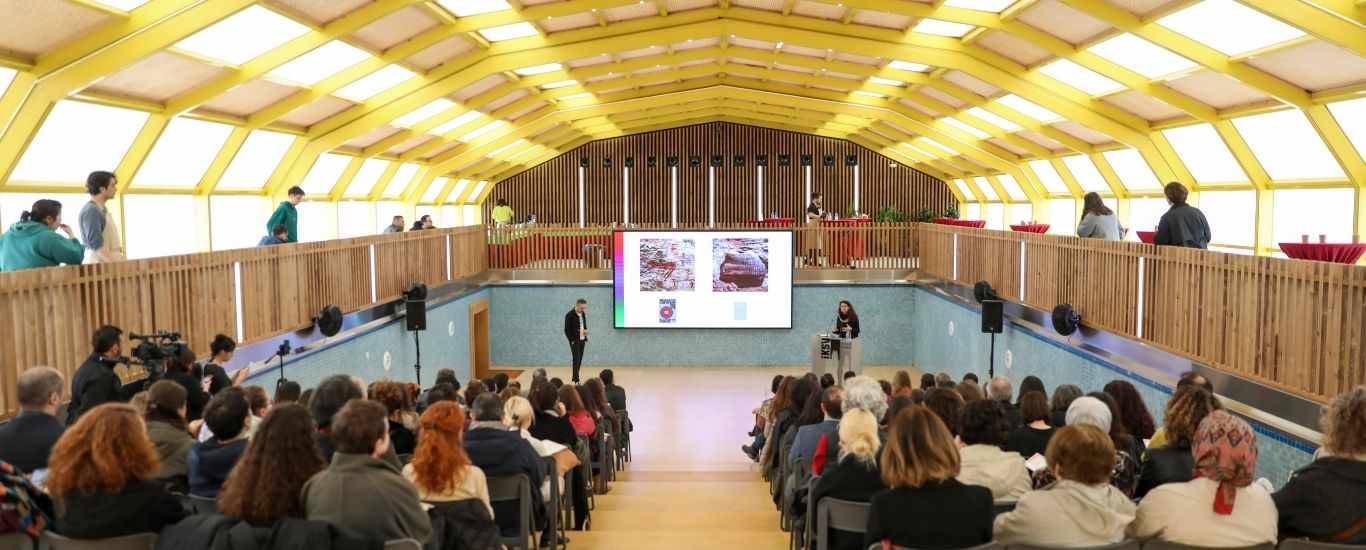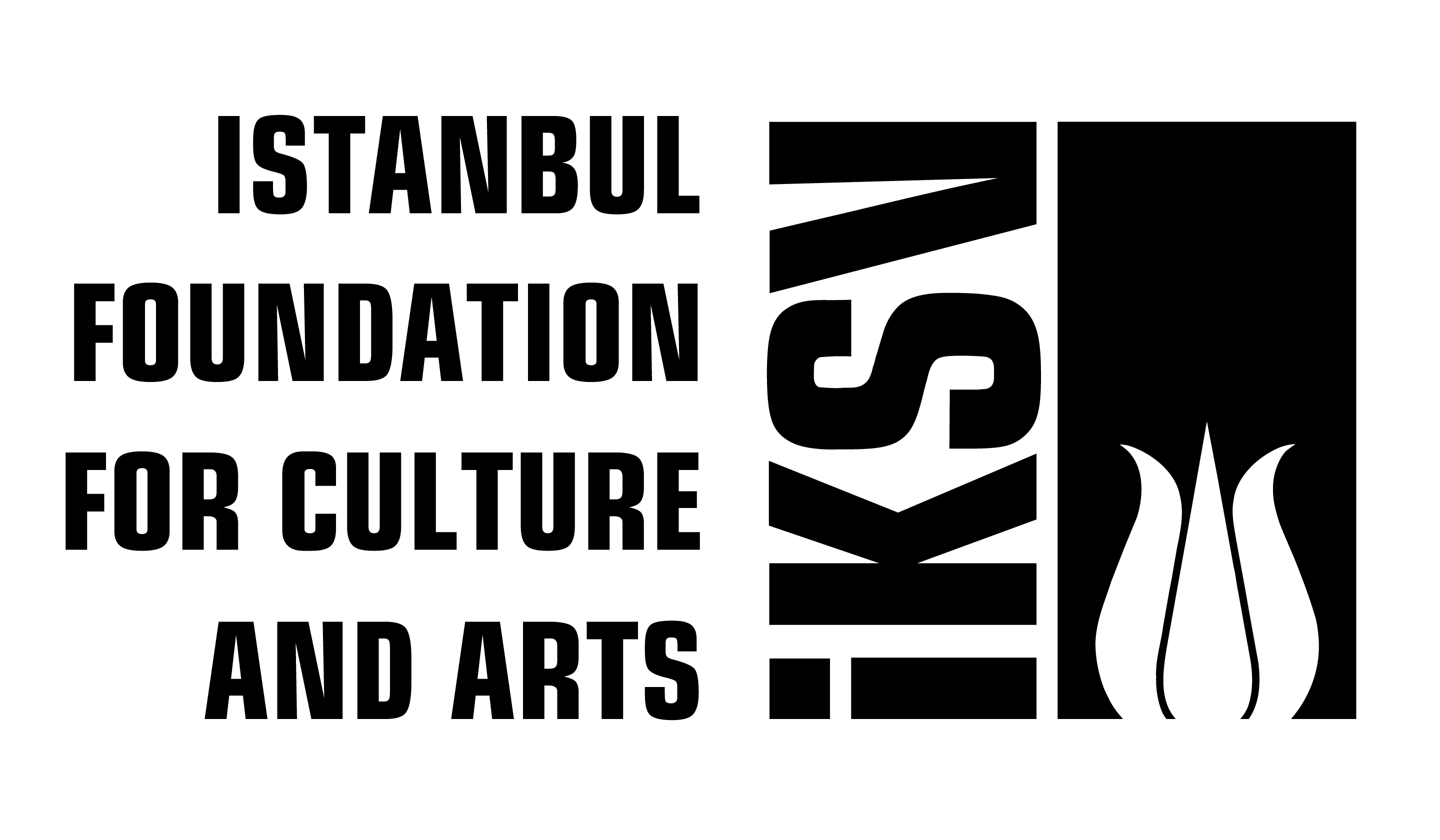Curated by Sevince Bayrak and Oral Göktaş, Ghost Stories: The Carrier Bag Theory of Architecture will be presented at the Türkiye Pavilion at the 18th International Architecture Exhibition - La Biennale di Venezia between 20 May and 26 November 2023. The Türkiye Pavilion is coordinated by the Istanbul Foundation for Culture and Arts (İKSV), co-sponsored by Schüco Turkey and VitrA, and realised with the contribution of the Ministry of Culture and Tourism under the auspices of the Ministry of Foreign Affairs of the Republic of Türkiye.
Ghost Stories: The Carrier Bag Theory of Architecture questions the accepted perceptions of and approaches to buildings to reveal more hopeful proposals for the future. Elizabeth Fisher’s Carrier Bag Theory of Evolution argues that, rather than hunting tools, the first cultural device used by humans was probably a carrier bag, which allowed them to transport the vegetables they gathered. Ursula K. Le Guin’s 1986 essay, The Carrier Bag Theory of Fiction, expanded this idea, moving away from the notion of the weapon-wielding hero. Based on this, the exhibition suggests listening to and understanding the stories of abandoned buildings, rather than focusing on more heroic, successful examples. The adaption of carrier bag theories, from evolution to architecture, brings a radical change to the images we have inherited, whether through the paintings on the walls of prehistoric caves, in stories, or in the modern cityscape. When these images start to change, this requires a shift in our way of doing things. Thus the shift from focusing on the image of a weapon to that of a carrier bag eventually transforms the whole scene from a heroic story of destruction to a collaborative, unfamiliar life story.
The research for the exhibition included an open call, launched in December 2022, aimed at compiling recent documentation of unused buildings across Türkiye. Considering these buildings as ‘the laboratory of the future’, the exhibition introduces novel tools and methods to transform rather than demolish existing structures, based on collective dreams and discussions.
Following the open call, an archive comprising images of hundreds of residences, building complexes and abandoned production sites, partially or completely empty skyscrapers, hotels, schools, hospitals, restaurants and recreational facilities was created thanks to the responses of contributors from all over Türkiye. One of the focal points of the exhibition – how to reinforce and reuse existing building stock – becomes even more urgent after the devastating earthquakes in Kahramanmaraş, which affected 13.5 million people, leaving thousands in need of temporary housing.
As its title, the exhibition will have a dual setup. While Ghost Stories shows examples of unused buildings in Türkiye with various functions in “The Cloud”, the Carrier Bag Theory of Architecture is positioned as a colourful “Workbench” that aims to transform this real but idle painting into a storehouse of hope for the future of cities.
A manifesto for The Carrier Bag Theory of Architecture, which will be displayed in the workbench area, plans to initiate discussions on how existing structures can be transformed under 15 different titles. The Manifesto titles explored at 15 tables in the workbench area are Story, Theory, Addiction, Ghosts, Entropy, Expiry Date, Why Demolish?, CSI, Concrescere, Repair Shop, Venice Charter – Revisited, Learning From, Test Drive, Transformers, The Pool. Read the manifesto here.
In addition to the exhibition, the curators are preparing a book that sheds light on the research process and findings of the exhibition and aims to involve architects and architecture students in the discussions it raises. Written by Sevince Bayrak and designed by Esen Karol, the book will be available in English and co-published by Istanbul Foundation for Culture and Arts (İKSV) and ListLab.
Ghost Stories: The Carrier Bag Theory of Architecture is curated by Sevince Bayrak and Oral Göktaş. The project team consists of Aysima Akın, Kevser Reyyan Doğan, Merve Akdoğan and the research team includes Taylan Tosun, Doğu Tonkur, Hatice Bahar Çoklar Berke Şevketoğlu, Duygu Sayğı. Exhibition design is by SO? Architecture and Ideas, the graphic design is by Esen Karol and the web developer is Özhan Binici.
The Türkiye Pavilion exhibition is coordinated by İKSV with the contribution of the Ministry of Culture and Tourism and under the auspices of the Ministry of Foreign Affairs of the Republic of Türkiye, and co-sponsored by Schüco Turkey and VitrA, with the airline partnership of Turkish Airlines. The Türkiye Pavilion has taken part in the International Architecture Exhibition since 2014, thanks to the acquisition of the permanent venue at Sale d’Armi, Arsenale on the initiation of İKSV and with the support of 21 sponsors.
 Oral Göktaş and Sevince Bayrak
Oral Göktaş and Sevince BayrakCurated by Sevince Bayrak and Oral Göktaş, Ghost Stories: The Carrier Bag Theory of Architecture will be presented at the Türkiye Pavilion at the 18th International Architecture Exhibition - La Biennale di Venezia between 20 May and 26 November 2023. The Türkiye Pavilion is coordinated by the Istanbul Foundation for Culture and Arts (İKSV), co-sponsored by Schüco Turkey and VitrA, and realised with the contribution of the Ministry of Culture and Tourism under the auspices of the Ministry of Foreign Affairs of the Republic of Türkiye.
Sevince Bayrak and Oral Göktaş said: “Since construction in Türkiye is triggered by economic growth rather than spatial needs, we have a huge variety of unused buildings, from hospitals to airports. As we were preparing this project, two earthquakes, with magnitudes of 7.7 and 7.6, struck South-eastern Türkiye, causing massive damage. In a country with an enormous building stock that has to be reinforced to resist earthquakes – since it is not possible to rebuild them all – we need to find ways to transform the existing and introduce novel tools and methods to nurture our collective dreams and discussions.”
İKSV General Manager Görgün Taner said: “Contributing to the production of culture and arts and creating opportunities for international interaction for audiences and creative professionals in Türkiye are among the main objectives of İKSV. In this context, we have undertaken the coordination of the Türkiye Pavilion at La Biennale di Venezia since 2007. We are happy to be able to open space for creative professionals who carry out stimulating and exciting works in the field of architecture in Türkiye at this event. We are going through very difficult times as a country. We had a great earthquake disaster; we were all deeply affected. I would like to thank our curators and the entire team for this project, which proposes a new way of thinking about how existing structures can be transformed in such a period, and offers an imagination of a different future and a different kind of reconstruction.”
Schüco Turkey General Manager Can Eren said: “Going beyond the timeless and valuable idea it contains, Ghost Stories: The Carrier Bag Theory of Architecture pushes us to think even more deeply on a very different subject in the current period. Abandoned buildings may have very different stories of their own, but there have been hundreds of cities in Türkiye that have been abandoned for various reasons throughout history, and there are countless abandoned structures in these cities. Unfortunately, the devastating earthquake we experienced a short time ago left us face to face with tens of thousands of buildings and cities that were left to be abandoned. I believe that this project will contribute to not forgetting the history of the places we live in and the urban fabric in which they are located, also to understand and respect it, and produce new and healthy ideas. I would like to congratulate everyone who contributed to the project, and I would like to express our happiness to be with İKSV in this biennial as co-sponsor.”
Eczacıbaşı Building Products’ CEO Özgen Özkan commented for the VitrA brand: “Türkiye's recent earthquake disaster has highlighted the immense responsibility of all building sector stakeholders. As we mourn our losses, we must prioritize preserving the past while building for the future. This year’s exhibition reflects on this tragedy by calling for a new perspective on construction, emphasizing the need to protect existing structures alongside creating new ones. Demolishing and rebuilding not only harms nature and heritage but also strains limited resources. We call on all stakeholders to prioritize sustainable and responsible practices. As a brand committed to these values, we proudly support the Türkiye Pavilion, an important initiative we've backed since 2014.”
Further details about the project can be found here.
